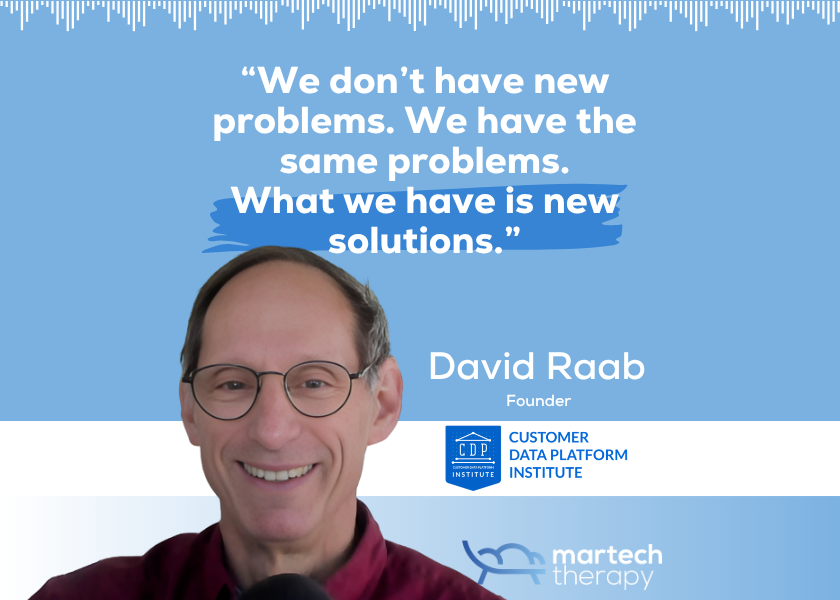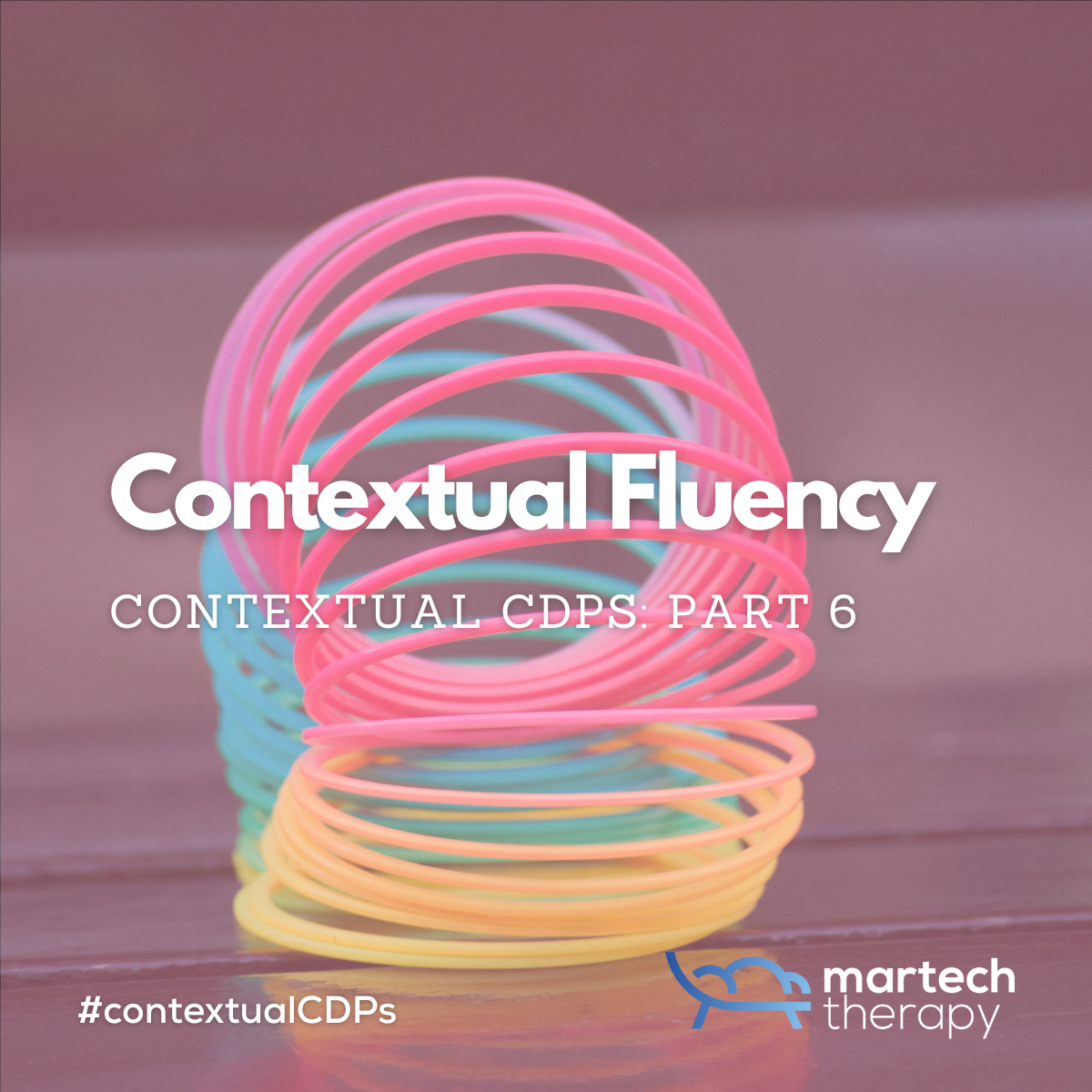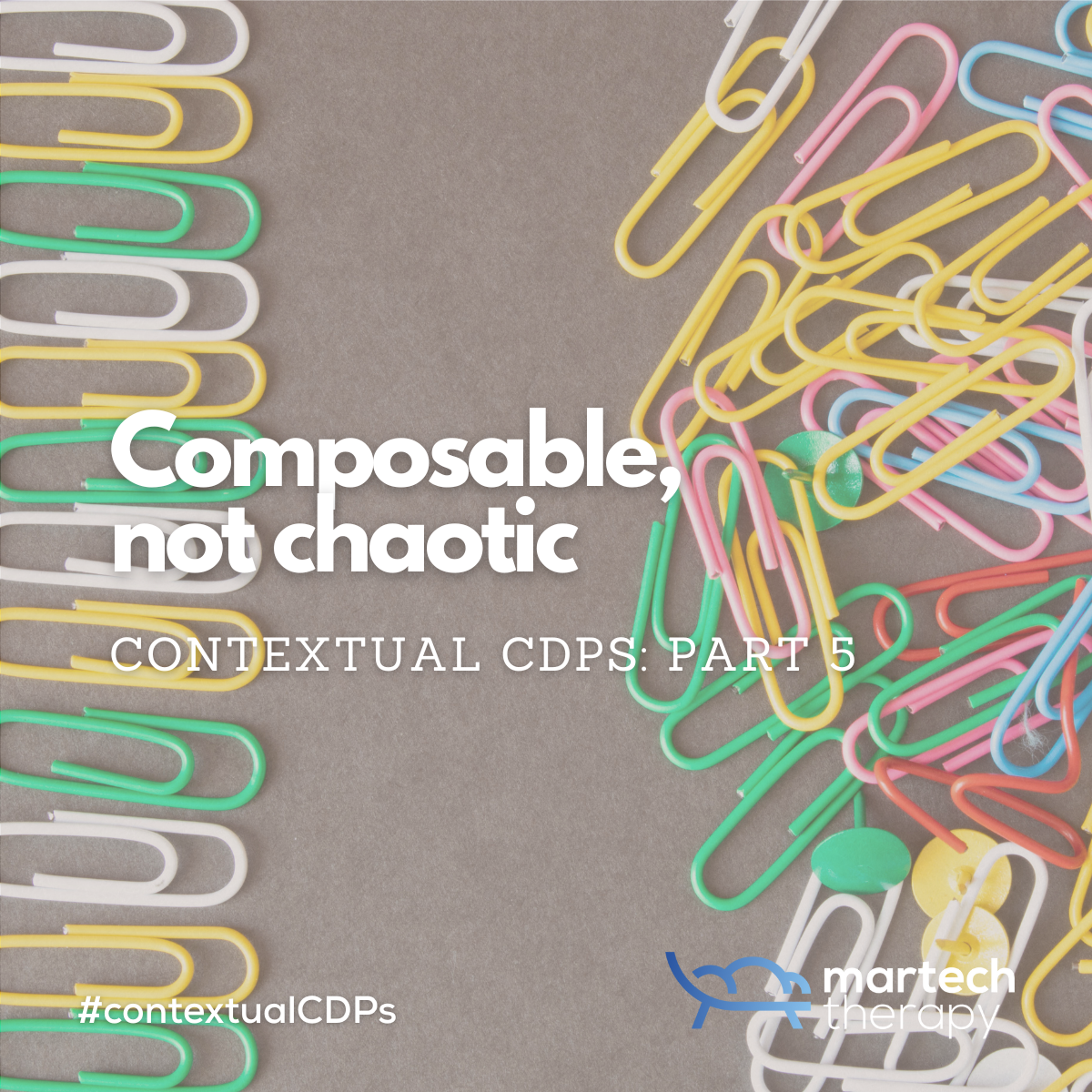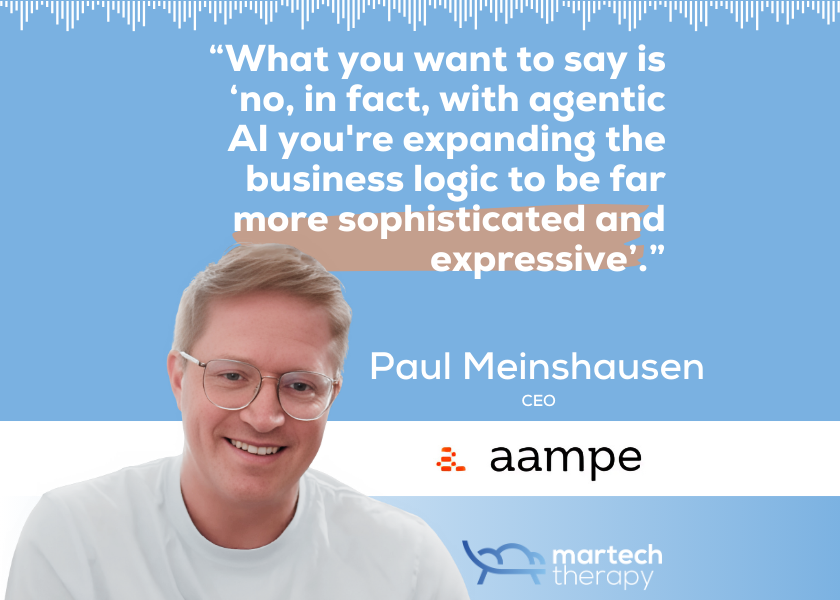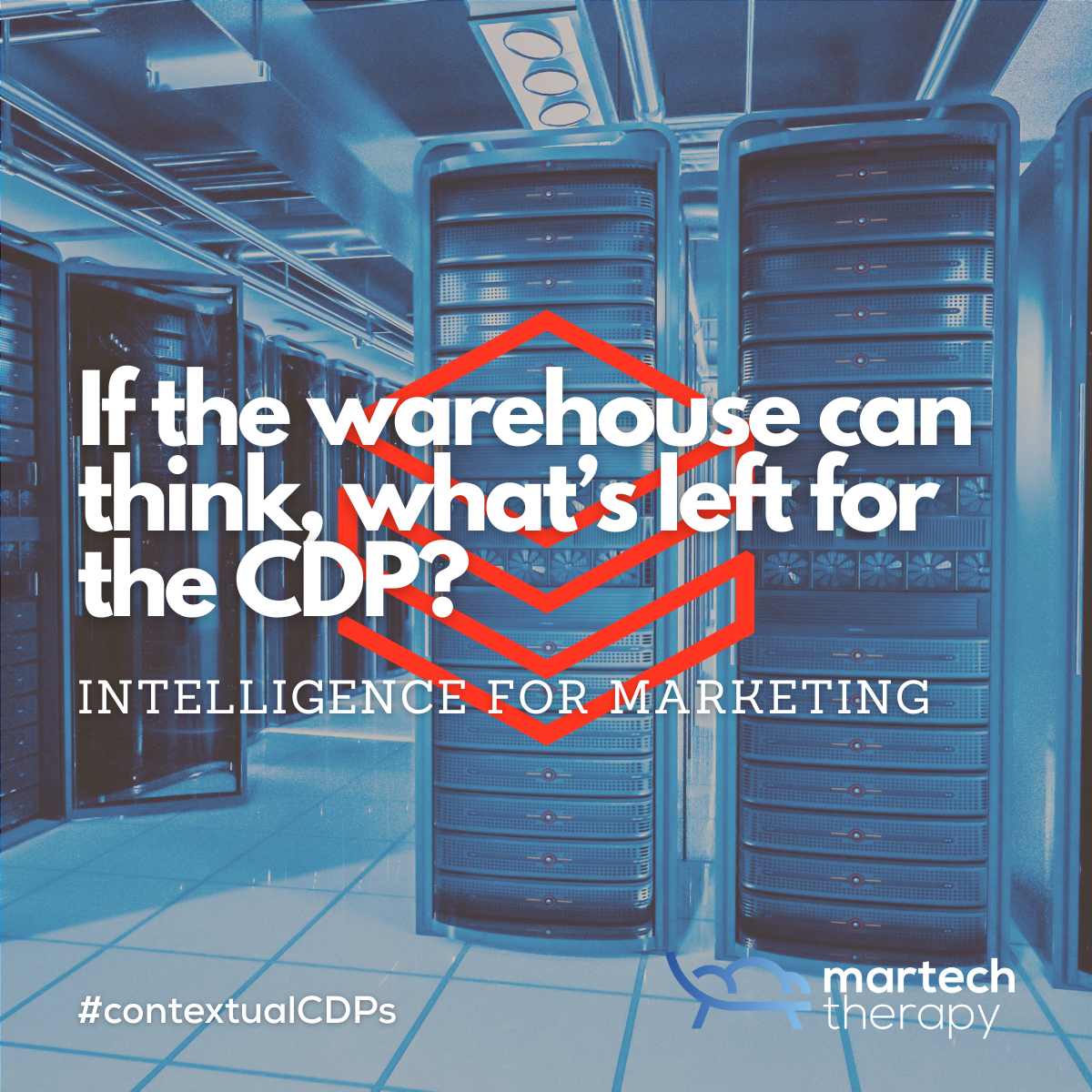CDP Institute’s David Raab coined the term Customer Data Platform, which makes him either the godfather of modern Martech or the guy responsible for every PowerPoint slide with a data unification triangle on it. Possibly both.
In this episode of Couch Confidentials, we talk about the slow death of CDP hype, why AI is just a mirror for your data mess, and why companies keep renaming “data plumbing” as “activation” in hopes it’ll feel more important.
We also cover how vendors are racing to bolt AI onto every surface like it’s a startup-themed version of Iron Man,


